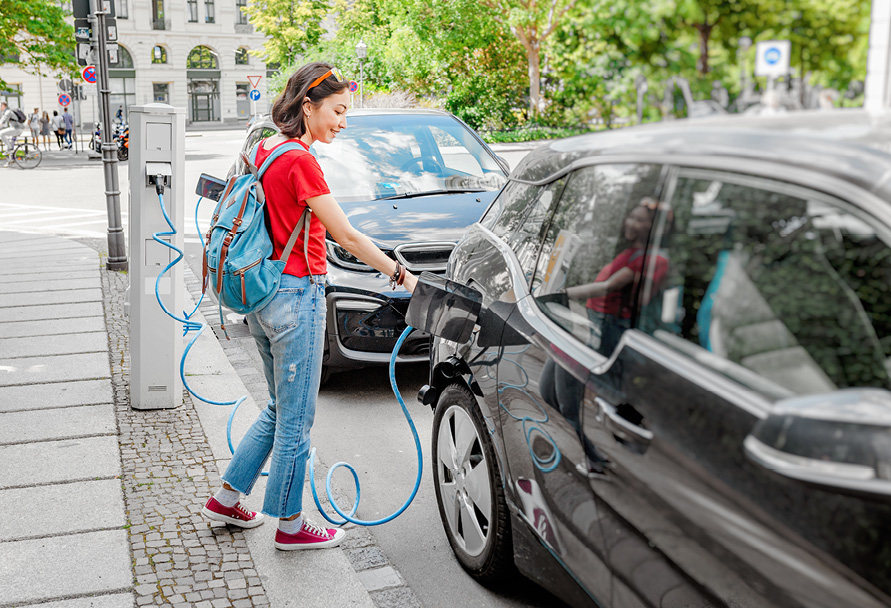Discover the benefits of driving electric
Electric vehicle choices
With around 50 different electric cars, trucks, and SUVs on the market, they’re becoming more popular than ever. Best of all, battery ranges have increased while the cost of the car has been steadily decreasing. There are two types of electric vehicles.
All-electric vehicles
- Run on a battery only
- Does not need gasoline or oil changes
- Save up to $1,000 a year on fuel and maintenance costs
Plug-in hybrid vehicles
- Run on both a battery and gasoline
Find an electric vehicle that is right for you. Visit PlugStar by Plug In America to find a car that fits your lifestyle.
Discover the benefits of driving electric
The benefits of driving electric are many, and, with our Ready EV rebate program for home and business charging, owning an electric vehicle has never been easier or more convenient. Here are four reasons why you’ll want to take a closer look at an EV when considering your next car purchase.
Affordability
Electric vehicles are getting more affordable to purchase thanks to federal tax incentives and around 50 different types of EVs on the market today. A number of states also offer financial incentives, including tax credits, for lowering the up-front costs to purchase an electric vehicle. With our Ready EV rebates for homes and businesses, the cost of a charging unit is significantly reduced.
Maintenance and fuel savings
It’s cheaper to charge the battery than fill up the gas tank because electricity prices are lower than gas prices. In addition, maintenance costs for electric vehicles are usually lower thanks to no oil changes and fewer tune-ups needed.
Convenience
Skip the line at the gas station. Instead, charge your vehicle at home while you sleep, or get a quick charge at a public charging station while you work or run errands.
They’re good for the environment
When you consider a vehicle’s entire life cycle, including things like production and emissions created getting the fuel it runs on, electric vehicles still outperform their conventional counterparts because most emissions are lower for electricity generation than for burning gasoline or diesel.
Myth busters
Myth 1: All EVs are expensive.
Myth busted: There are many financial incentives, including federal and state tax credits, lowering the up-front costs to purchase an electric vehicle. The Department of Energy keeps an up to date database of state and federal tax credits and other incentives to help you figure out if purchasing an EV is feasible for you.
Myth 2: Electric vehicles are worse for the climate than gasoline cars because of the power plant emissions.
Myth busted: Electric vehicles emit zero tailpipe emissions and typically have a smaller carbon footprint than gasoline cars, even when accounting for the electricity used for charging.
However, production of the vehicles must be taken into account. Power plant emissions vary widely based on how local power is generated. For example, coal or natural gas power plants emit carbon pollution, versus renewable resources like wind or solar, which do not. Even accounting for these electricity emissions, research shows that an EV is typically responsible for lower levels of greenhouse gases (GHGs) than an average new gasoline car.
To the extent that more renewable energy sources like wind and solar are used to generate electricity, the total GHGs associated with EVs could be even lower. Learn more about electricity production in your area.
Myth 3: Electric vehicles don’t have enough range to handle daily travel demands.
Myth busted: Most EV models go above 200 miles on a fully charged battery and roughly 85% of households travel under 100 miles on a typical day. Plus, automakers have announced plans to release even more long-range models in the coming years to further support long-distance road travel in EVs.
Myth 4: There is nowhere to charge.
Myth busted: According to the U.S. Department of Energy, there are nearly 43,000 public EV charging stations in the U.S. and around 120,000 charging ports.
Resources like PlugShare can help you find an EV charging station near you or along your road trip route.
